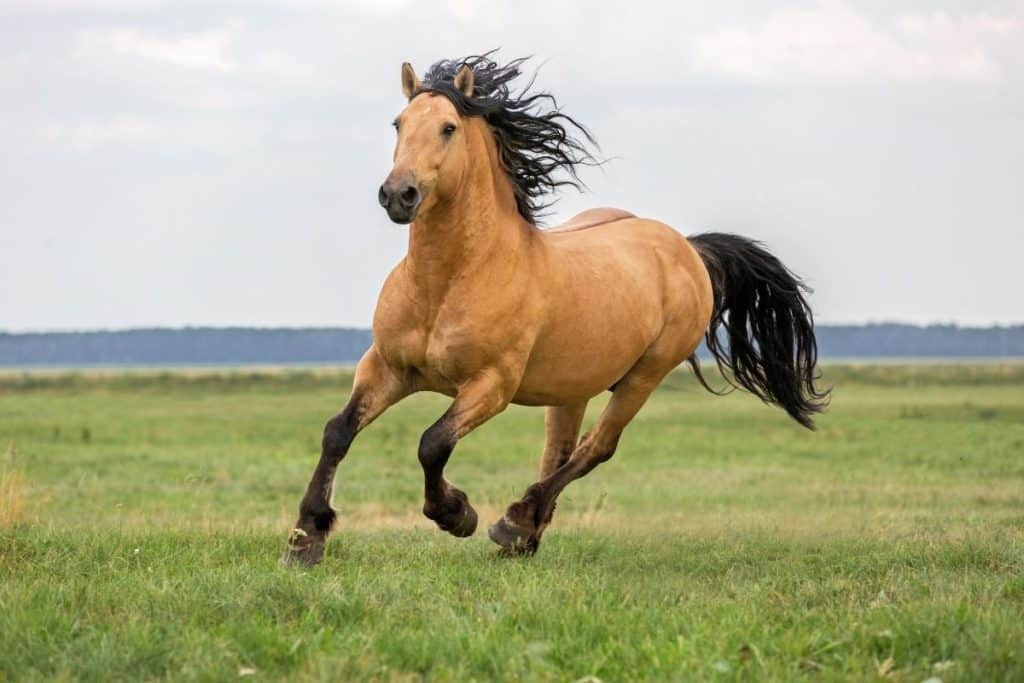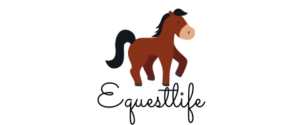Many people take up an interest in horseback riding but hesitate to invest in a horse and other equipment required because it’s expensive. But why are the costs of horse riding so high in the first place?
There are many costs involved in horse riding that make it expensive. The most significant expenses include purchasing ($1500-3000) and maintaining ($300-$500/month) the horse. The additional equipment necessary to ride the horse requires an initial investment of at least $800.
Add in the expense of horse riding lessons into the equation, and it may seem like an unaffordable hobby. However, although horse riding may be expensive, it may be worth it. Read on to learn more about why horse riding is so costly and tips on decreasing the expense.
What’s the Average Cost of Owning a Horse?
The average annual cost of owning a horse is $3,876. The largest part of this expense covers feeding the horse, followed by providing any necessary healthcare. A horse also requires shelter and bedding. Other factors contributing to this expense include hoof care, shoeing, and grooming.
How Much Does It Cost to Feed a Horse?
The average horse will eat 15 to 20 pounds of hay per day. This adds up to a monthly food cost of $100-$250.
Note: The monthly cost for hay varies based on the time of year and your location. If you have the land available, allowing the horse to graze will lessen the cost of purchased hay.
In addition to the cost of food, a horse needs a supplemental source of sodium. The best source is salt blocks, which are $25 each and can be replaced as needed. Some horse owners provide other supplements as a matter of preference if it is within their monthly budget. On average, horse owners spend $20-$40 per month on supplements.
What Are the Healthcare Costs for a Horse?
Annual veterinarian bills are a considerable expense and average $485 for general care. General care includes checkups, dentistry, vaccinations, and deworming.
Naturally, this cost can skyrocket considerably with an emergency injury or illness. Because horses can be prone to injuries, especially with their legs, owners should keep a cash reserve to cover additional medical bills.
Additional Horse Maintenance Costs
It’s essential to take care of a horse’s hooves. They require trimming and shoeing, and a farrier is a specialist that can provide these services.
The cost of trimming hooves is $25-$50 and should be done every six weeks; the cost of shoeing a horse can be $110-$135 and also needs to be done every six weeks.
You will also need to consider any fencing or shelters you may need for your horse. If you don’t have existing structures to contain your horse, adding them can be a considerable expense.
Horse Riding Expenses
Additional costs associated with owning a horse are the equipment necessary for riding. According to horses.extension.org, horse riding requires at least the below items:
- Saddle
- Bridle
- Saddle pad
- Lead Rope
- Halter
This equipment is known as tack. The average cost of the tack required for horse riding is $843, but can be much higher.
How Much Are Riding Lessons?
Riding lessons range between $30-$100 a session. This price range includes classes where the rider is present, and sessions for the horse and trainer are one-on-one. A good trainer can help determine if a horse needs individual instruction sessions.
What to wear to riding lessons is a matter of choice and budget. You can gear up with chaps, boots, and gloves if that is your preference. Special clothing isn’t required, though; any pair of long pants will do. Closed-toe shoes are highly recommended.
One item you do need for lessons is a helmet, and it may be provided for you at the training facility. If not, they are easily found online, starting at $45 and up. While not ideal, a bicycle helmet could be a substitute if allowed by the training facility.
How to Save Money on Horse Riding Expenses

As you can see, the costs of owning and then riding a horse can certainly add up, but there are fortunately ways you can decrease the financial burden that comes with the hobby:
- Purchasing hay right after the growing season can save a lot. Hay becomes considerably more expensive heading into the winter months. An initial bulk purchase of enough hay to feed your horse for the year can be well worth it.
- Horse insurance is available to help manage the cost of healthcare emergencies. The annual premium is based on the value of the horse. Due to the substantial investment a horse requires, this may be an excellent option to consider.
- You can lower the expense of horse riding by purchasing used equipment rather than new.
- You can always take horse riding lessons with a horse provided by the training facility; this is an excellent option to consider since you can gain horse riding experience without the commitment of ownership.
- Since purchasing the horse is the most expensive investment, to begin with, buying a cheaper horse can help significantly reduce your initial horse riding costs, too.
What’s the Cheapest Horse to Buy?
Luckily, there are less expensive breeds of horses for those on a tight budget:
- Quarter horses
- Arabians
- Thoroughbreds
- Wild Mustangs
It may be surprising to see Thoroughbreds listed as an inexpensive horse option, but this is a result of the horse racing industry breeding them so often; there is an oversupply.
Horses that do not have racing potential can end up in a Thoroughbred rescue, which is where you could find low-priced horses and gain the benefit of providing a horse with a new lease on life.
However, it’s worth noting that purchasing an inexpensive horse breed may drive up your expenses in the long run. Quarter horses, for example, are known for having health problems. You may save money upfront but pay more in veterinary care in the long run.
The age of a horse you choose to purchase can also lower the price. An old or very young horse would cost less than a horse in its prime. However, the drawback of older horses would be that you may have increased healthcare costs.
On the other hand, a very young horse would require more of your time to train.
Horse Leases & Shares
If the expense of buying and caring for a horse is not in your budget, horse leases or share agreements are alternative options.
- A horse lease is an agreement where you pay an owner for the use of their horse. The owner takes care of all the maintenance expenses in this type of arrangement.
- With a horse share, you enter an agreement with another party and split the cost of purchasing and maintaining the horse.
If these options don’t appeal to you, a combination of the above tips is still a suitable way to save money when you own a horse.
Conclusion
In summary, horse riding is expensive, but there are ways to make it more affordable. As with any animal, it’s a good rule of thumb to consider the costs of caring for a horse properly before purchasing one. Creating a budget based on a horse’s needs upfront can help you determine if horse ownership is within your family’s budget.
Whether it is a dream of yours or your child’s, horse riding is a rewarding experience. Riding horses has both positive physical and mental health benefits. The benefits may be worth the expense and time planning to incorporate horse riding into your life.
